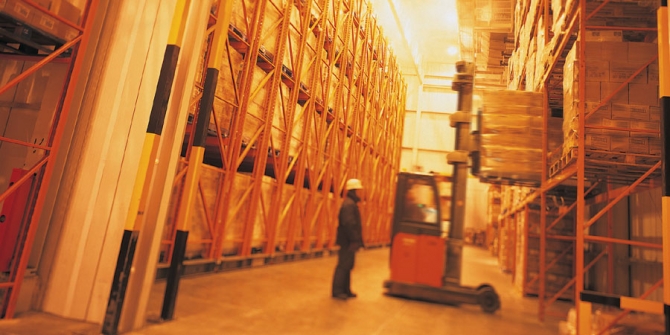Facing tighter budgets and skyrocketing demand, modern warehouses and distribution centres are under constant pressure to do more with less. Money, space and time are always at a premium, so it’s not surprising that efficiency is the order of the day.
From improving productivity with warehouse management solutions and automated processes, to tailoring inventories based on customer demand and squeezing every last inch of usable space from premises, the industry is pulling out all the stops in the race for commercial advantage.
Mention warehouse safety in this context and you’re likely to be met with confused silence. Protecting workers is usually seen as a necessary business expense – an essential responsibility, to be sure, but one that’s more likely to hurt the bottom-line than help it.
Fortunately, taking an innovative approach to safety can go hand-in-hand with making warehouses more streamlined, efficient and cost-effective. Here’s how.
Safety needn’t cost the Earth
First off, improving warehouse safety needn’t demand an enormous capital investment. There are existing tools and resources that can be exploited easily, quickly and cheaply.
The most obvious starting point is employees themselves: while business owners, warehouse managers and supervisors remain ultimately accountable, all employees should see safety as their responsibility. With a relatively small investment of time, employees can schedule regular safety meetings to discuss issues and set up committees to review problems. Business owners can support this by prioritising safety in a firm statement of intent and by giving supervisors safety-related KPIs as part of their career progression goals.
Meanwhile, technologies to improve safety are now incredibly simple to deploy. For instance, with many staff already bringing mobile devices to work, mobile apps offer an easy, convenient and low-cost way to improve warehouse communications, increase employee protection and raise the alarm when necessary. Often these solutions have integrated web-based management suites that make reporting and responding to incidents extremely straightforward.
Safety brings savings
Can improving safety actually boost your bottom-line? Absolutely. With a reliable communications system that allows staff at all levels to report, review and resolve problems, warehouses dramatically reduce the potential for inventory to be lost or damaged and make it far less costly and time-consuming to tackle safety issues.
The cost of damaged inventory can be mind-boggling; remember the poor unfortunate who dropped $1 million of wine from his forklift?i Of course, most such accidents don’t make the headlines, but manufacturers lose around 1-2% of gross sales due to product damage every year.ii These accidents are far more likely to happen when a worker isn’t familiar with the warehouse environment, procedures or handling equipment. Ensuring employees receive a full safety briefing and relevant training can pay huge dividends simply by minimising the risk of damaging goods, for instance through mishandling or incorrect stacking.
Safety is priceless
Ultimately, optimising warehouse safety doesn’t just protect employees, it protects the bottom-line. By reducing injuries, preventing long-term health problems and increasing job satisfaction, workers become more productive and absenteeism is slashed.
In contrast, supporting an injured employee can cost as much as £45,000iii over just three months, and storage and warehousing now has the second highest rateiv of handling injuries of all UK industries. As automation continues to increase, it’s also becoming more common for employees to work without direct supervision, either at unusual times or in isolated sections of a warehouse, increasing the risk of mishaps.
Ultimately, every warehouse can benefit from optimising safety. If it’s not one of your top priorities today, you’re just storing up problems for the future.
- The Daily Mail, That’s what you call a wine spill: Fork-lift truck drops $1m of top Aussie wine, 2011: http://www.dailymail.co.uk/news/article-2017747/2010-Mollydooker-Velvet-Glove-shiraz-Forklift-truck-drops-1m-worth.html#ixzz3eOr7VP65
- Shurtape, Living on the edge infographic, 2013: http://www.mmh.com/article/survey_illustrates_dangers_and_preventable_costs_of_using_knives_to_open_pa
- HR Zone, How to keep your lone workers safe, 2015: http://www.hrzone.com/community-voice/blogs/lone-alert/how-to-keep-your-lone-workers-safe
- HSE, Handling injuries in Great Britain, 2014: http://www.hse.gov.uk/statistics/causinj/handling-injuries.pdf







